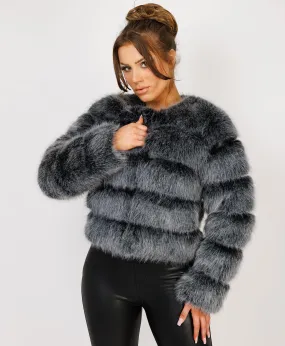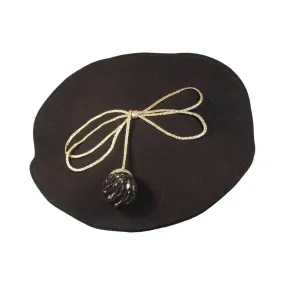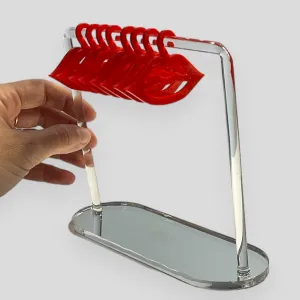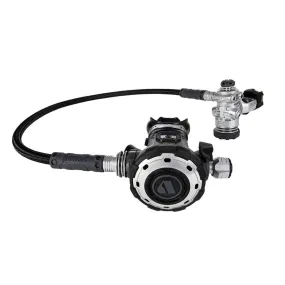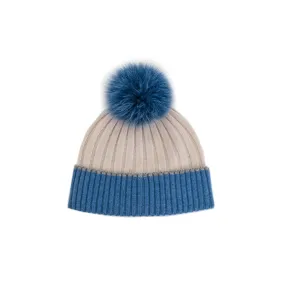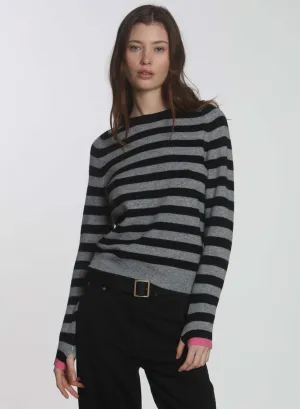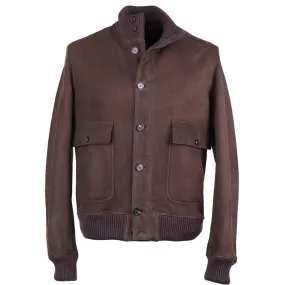Original Item: One-of-a-kind. This is a genuine USGI bring back Trophy of War. The unique aspects of this helmet are a .30 caliber size bullet entry hole in the rear of the helmet, just left of center, and a much larger exit hole in the front right. This is the size round used by Allied Machine guns and Service rifles. More importantly, this was the size round used by the popular M1903 A4 Springfield and Springfield M1C Garand sniper rifles, as well as the British SMLE Rifle with Scope. This pattern of damage is completely consistent with a sniper "head shot". It tore through the rear liner band, liner, and was definitely tumbling when it punched through the front. Close inspection of the paint, style and aging of the edges lead us to be totally confident that this exit path is genuine to the WWII period.
Otherwise, this is also an all original example of a German WWII M35 helmet, as issued to the Heer (Army). It is painted in a very nice Textured Feldgrau (field gray) paint, which is retained at around 90%. Textured paint is much harder to find on these helmets, and we usually see it only on very early issue helmets, such as this one.
The reverse, interior, neck guard apron is batch number stamped 312, and the interior, left side, apron has a stamped manufacturer's code and size, Q62. This indicates it was manufactured by Quist in Esslingen, Germany in size 62. Size 62 is a nice smaller size that can accommodate liners from 54cm to 55cm or US 6 3/4 to 6 7/8.
All three liner retaining pins are intact, with the textured paint retained well on all. The interior of the helmet still has the original M31 liner band and padding, but the leather has been almost completely removed, probably as the soldier bringing it back did not want to deal with the damage. The early issue aluminum liner band is marked on the left outer side with 62 nA / 54, indicating that the liner is a size 54, intended for a 62 shell.
The right side displays the full manufacture information, as well as a date:
Metall-Lederverarbeitung W.Z.
1939
Bln. Ch'burg 5.
The liner band has the correct earliest pattern square aluminum chin strap lugs, though unfortunately the chin strap is completely missing. The band itself is also bent out in the back around where the bullet penetrated the helmet.
Overall a very nice 100% genuine M35 KIA Shot Through Heer Army helmet! M35 helmets of this quality are always the hardest to find on the market. This is an item that will only continue to appreciate in value over time.
The first "modern" steel helmets were introduced by the French army in early 1915 and were shortly followed by the British army later that year. With plans on the drawing board, experimental helmets in the field, ("Gaede" helmet), and some captured French and British helmets the German army began tests for their own steel helmet at the Kummersdorf Proving Grounds in November, and in the field in December 1915. An acceptable pattern was developed and approved and production began at Eisen-und Hüttenwerke, AG Thale/Harz, (Iron and Foundry Works), in the spring of 1916.
These first modern M16 helmets evolved into the M18 helmets by the end of WWI. The M16 and M18 helmets remained in usage through-out the Weimar Reichswehr, (National Defence Force, Circa 1919-1933), era and on into the early years of the Third Reich until the development of the smaller, lighter M35 style helmet in June 1935.
In 1934 tests began on an improved Stahlhelm, whose design was a development of World War I models. The Eisenhüttenwerke company of Thale carried out prototype design and testing, with Dr. Friedrich Schwerd once again taking a hand.
The new helmet was pressed from sheets of molybdenum steel in several stages. The size of the flared visor and skirt was reduced, and the large projecting lugs for the obsolete armor shield were eliminated. The ventilator holes were retained, but were set in smaller hollow rivets mounted to the helmet's shell. The edges of the shell were rolled over, creating a smooth edge along the helmet. Finally, a completely new leather suspension, or liner, was incorporated that greatly improved the helmet's safety, adjustability, and comfort for each wearer. These improvements made the new M1935 helmet lighter, more compact, and more comfortable to wear than the previous designs.
The Army's Supreme Command officially accepted the new helmet on June 25, 1935 and it was intended to replace all other helmets in service.
More than 1 million M1935 helmets were manufactured in the first two years after its introduction, and millions more were produced until 1940 when the basic design and production methods were changed.



















